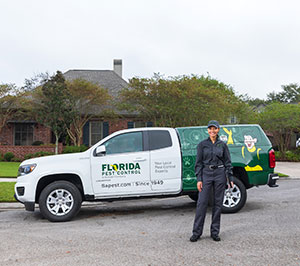Bed Insect Therapy Breakdown: Comparing Chemical Vs. Non-Chemical Solutions
In the realm of bug control, especially when dealing with the consistent concern of bed bugs, the selection in between chemical and non-chemical treatment services can be an essential one. Both methods use distinctive benefits and downsides, influencing aspects such as performance, safety considerations, and overall cost. By taking a look at the nuanced information of each technique, a clearer understanding of which course to seek in addressing a bed bug problem can be obtained.
Efficiency of Chemical Therapies
Chemical therapies for bed insect infestations have actually been commonly acknowledged for their fast and powerful efficiency in eliminating these insects. When taking into consideration the efficiency of chemical treatments, it is essential to comprehend that they can provide a extensive and quick remedy to a bed pest trouble. Professional exterminators typically count on pesticides to target bed bugs at different phases of their life process, including eggs, adults, and nymphs. These chemicals commonly work by disrupting the bed insects' nerves, causing paralysis and eventual fatality.
Additionally, chemical treatments have the benefit of supplying residual effects, suggesting that they can proceed to eliminate bed bugs even after the preliminary application. This residual action is particularly helpful in combating any type of potential re-infestations. Additionally, the quick activity of chemical treatments can bring alleviation to individuals dealing with serious bed bug infestations, enabling them to regain control of their space quickly.
Security Worries With Chemical Solutions
One important element that calls for careful factor to consider when making use of chemical services for bed bug therapy is guaranteeing the safety of passengers and the environment. Direct exposure to certain chemicals made use of in bed bug treatments can lead to respiratory problems, skin irritability, or other damaging reactions, especially in people with pre-existing problems or sensitivities.
Moreover, the ecological effect of chemical remedies is one more substantial consideration. Some chemicals utilized in bed pest treatments might be damaging to beneficial bugs, wild animals, and environments if they leach right into the soil or water supply. It is vital to make use of chemical treatments deliberately, complying with safety and security guidelines, and thinking about much less harmful choices to mitigate these risks and make sure the secure and effective monitoring of bed insect infestations.
Advantages of Non-Chemical Techniques
Considering the potential safety concerns and environmental impact related to chemical services for bed pest therapy, discovering non-chemical methods presents an encouraging choice with numerous distinctive advantages. Non-chemical techniques provide a safer option for homes, specifically those with people, kids, or family pets conscious harsh chemicals. These methods eliminate the risks of direct exposure to toxic materials, lowering the capacity for unfavorable health effects. Additionally, non-chemical treatments are environmentally pleasant, as they do not contribute to air or water air pollution, making them a lasting choice for parasite control.
Furthermore, non-chemical solutions can be reliable in targeting bed bugs, consisting of hard-to-reach areas where chemical therapies Home Page may not penetrate. Methods such as warmth treatment, vacuuming, vapor cleaning, and mattress coverings offer extensive removal without making use of damaging chemicals. Furthermore, non-chemical methods can be much less turbulent, requiring marginal preparation and permitting for quicker reentry right into treated areas. Generally, choosing non-chemical bed insect therapy methods not just prioritizes security and ecological defense however likewise makes certain thorough and effective insect control.
Limitations of Non-Chemical Treatments

Additionally, non-chemical treatments frequently need several applications to attain effective obliteration. This can be lengthy and might not constantly guarantee total elimination of all bed pests and their eggs, particularly in hard-to-reach or concealed locations.
In addition, the success of non-chemical therapies heavily depends on appropriate execution and thoroughness, which can be testing for individuals without professional know-how. Insufficient application of non-chemical approaches may lead to insufficient obliteration, bring about relentless infestations and the requirement for extra therapies.
Consequently, while non-chemical therapies have their advantages, it is vital to acknowledge these limitations and consider them when identifying the most reliable approach for managing bed bug infestations.
Cost Comparison: Chemical Vs. Non-Chemical Options
Offered the constraints linked with non-chemical therapies, an essential facet to examine in the context of bed insect management is the cost contrast in between chemical and non-chemical choices. Chemical treatments commonly entail the application of pesticides by professionals, which can range from $250 to $900 per room, relying on the extent of the invasion and the size of the area to be treated. In comparison, non-chemical therapies like heat therapy or vapor can be a lot more costly, with costs varying from $1,000 to $6,000 for an entire home. While the preliminary cost of chemical therapies may appear lower, several therapies may be called for to completely get rid of the problem, possibly increasing the total cost. On the various other hand, non-chemical choices might give a much more environment-friendly and lasting service, although they can be cost-prohibitive for some people. Eventually, when considering the cost of bed pest treatment alternatives, it is essential to consider the upfront expenses versus the effectiveness and long-lasting sustainability of the picked method.
Verdict

Taking into consideration the potential safety worries and ecological influence associated with chemical options for bed pest therapy, discovering non-chemical methods provides an encouraging find out here choice with several distinctive benefits.Given the limitations associated with non-chemical treatments, an essential element to review in the context of bed pest monitoring is the cost comparison in between chemical and non-chemical options. In contrast, non-chemical therapies like warmth therapy or heavy steam can be more expensive, with expenses varying from $1,000 to $6,000 for a whole home. While the first price of chemical therapies might seem reduced, several therapies may be called for to completely eradicate the infestation, potentially raising the general expense.In verdict, when comparing chemical and non-chemical bed bug treatment alternatives, it is vital to think about efficiency, security, benefits, limitations, and price.